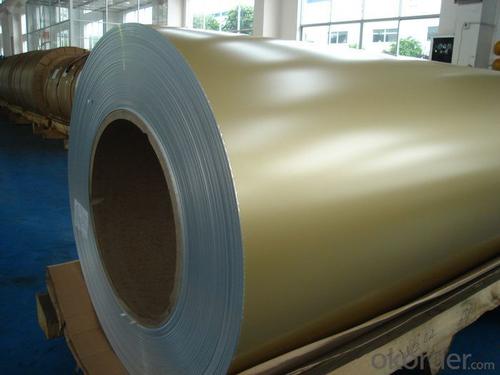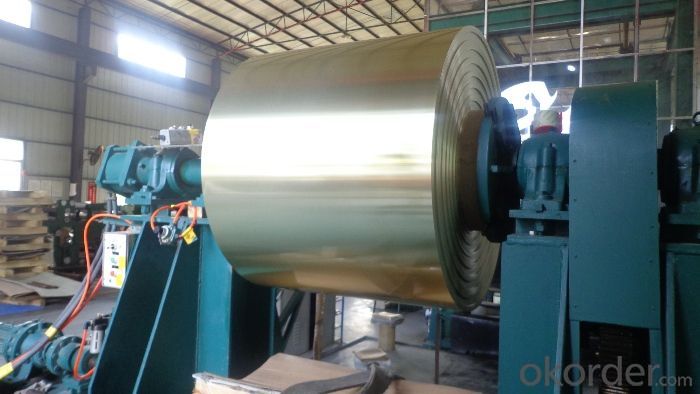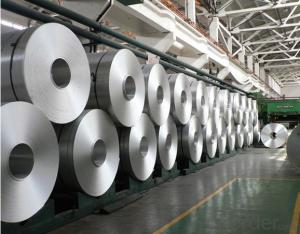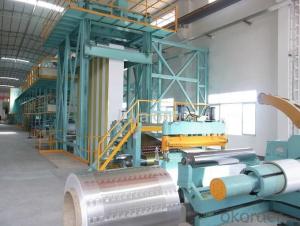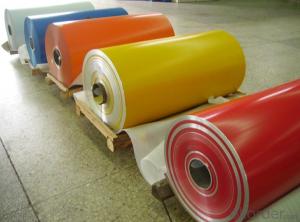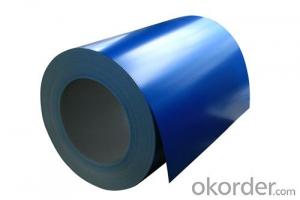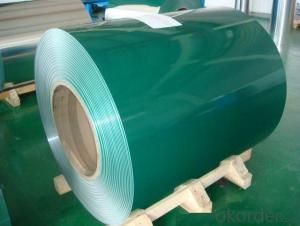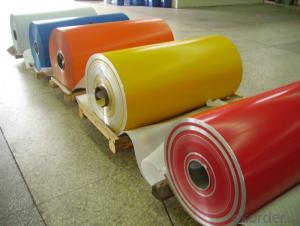Perforated PVDF Coated Aluminum Coils 3004 Alloy for Building Materials
- Loading Port:
- Yantai
- Payment Terms:
- TT OR LC
- Min Order Qty:
- 7 m.t.
- Supply Capability:
- 200 m.t./month
OKorder Service Pledge
OKorder Financial Service
You Might Also Like
Specification
1.Structure of PVDF Coated Aluminum Coils 3004 Alloy for Building Materials
We normally used PVDF coated aluminum coils 3003 for building materials.
3003 is very good in high strength, corrosion resistance, high weather resistance and other characteristics.
Embossed aluminum sheets have many advantages. Embossing can not only increase thickness of aluminum, but also enhance strength and rigidity of aluminum coils. Embossed & coated aluminum coils look more beautiful and widely used in decorations.
2. Main Features of PVDF Coated Aluminum Coils 3004 Alloy for Building Materials
• Light Weight
• Good in strength and rigidity
• High Flatness
• Good Weathering
• Colorful
• Recycling
• Saving Energy
• Rust proof
3. PVDF Coated Aluminum Coils 3004 Alloy for Building Materials Images
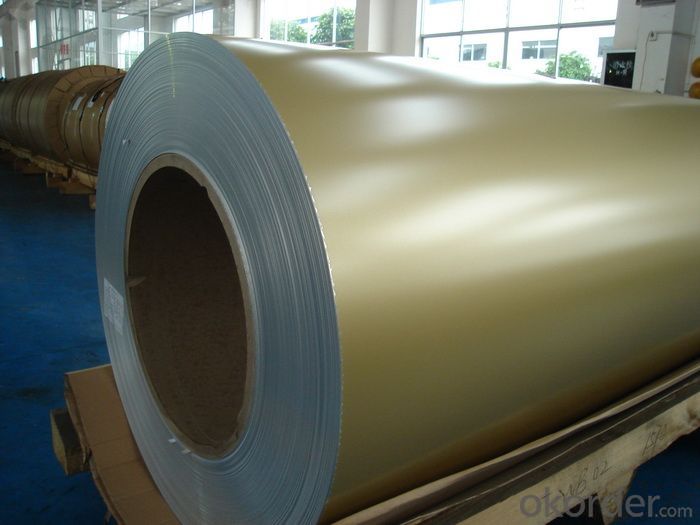
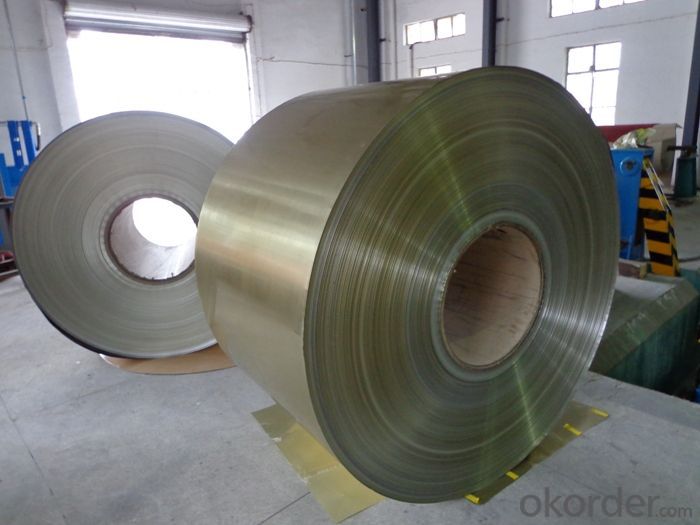
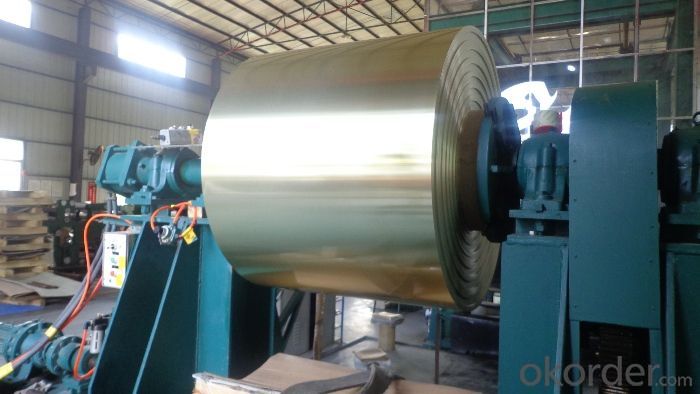
4. Specification of PVDF Coated Aluminum Coils 3004 Alloy for Building Materials
ALLOY | TEMPER | THICKNESS | WIDTH | COATING and COLOR |
3003, 3105, etc | H44, etc | 0.2-0.6mm | Less than1600mm | AS PER YOUR REQUIREMENTS |
5. FAQ
A.What about inspections to guarantee quality?
For each order, we will arrange strict inspection for raw materials, inspection during production and inspection for finished goods.
With requirement of customers, we also can arrange the third party inspection.
B.What about delivery?
We will put order in production schedule after order gets confirmed against copy of TT or L/C. Normally it takes about one month for production. Exact shipment schedule is different based on different sizes and quantity.
C.What is the MOQ?
5 tons for each size.
D. Where have you exported?
We have exported to many countries. Main markets include South East Asia, Middle East, North America, South America, etc.
- Q: Can aluminum coils be used in building facades?
- Building facades can indeed incorporate aluminum coils. Due to its numerous advantages, aluminum is a favored material for such applications. Its lightweight nature, durability, and resistance to corrosion make it ideal for exterior use. Furthermore, aluminum coils can be shaped into various forms and sizes, enabling limitless design possibilities. Additionally, aluminum offers a wide selection of finishes, such as anodized, painted, and coated, enhancing customization options for building facades. Moreover, aluminum is an environmentally sustainable material as it can be 100% recycled, making it an eco-friendly choice for construction projects. In conclusion, aluminum coils offer both aesthetic appeal and functional performance, making them a feasible choice for building facades.
- Q: This question asks for a comparison between aluminum coil and iron coil, highlighting their distinct properties and uses.
- <p>Aluminum coil and iron coil differ in several aspects. Aluminum coil is lightweight, corrosion-resistant, and has excellent electrical and thermal conductivity, making it ideal for electrical wiring, heat sinks, and food packaging. Iron coil, on the other hand, is heavier, stronger, and more durable, commonly used in construction, automotive, and heavy machinery due to its high tensile strength. Iron also has magnetic properties, useful in applications like transformers and electromagnets. While aluminum is non-magnetic, it is more cost-effective and has better recyclability compared to iron.</p>
- Q: What are the potential applications of coil-annealed aluminum coils?
- Coil-annealed aluminum coils have a wide range of potential applications in various industries. One potential application is in the automotive industry. Coil-annealed aluminum coils can be used to manufacture lightweight parts and components for vehicles. The lightweight nature of aluminum makes it an ideal material for improving fuel efficiency and reducing emissions. These coils can be used to produce body panels, chassis components, and structural parts in automobiles. Another potential application is in the construction industry. Coil-annealed aluminum coils can be used to manufacture roofing, siding, and wall cladding materials. The corrosion-resistant properties of aluminum make it a suitable choice for outdoor applications where durability is important. Additionally, the lightweight nature of aluminum makes it easier to handle and install, reducing labor and transportation costs. Coil-annealed aluminum coils can also find applications in the packaging industry. Aluminum is a great choice for food and beverage packaging due to its non-toxic, odorless, and impermeable qualities. These coils can be used to produce cans, foil wraps, and pouches, providing a safe and hygienic packaging solution. Furthermore, coil-annealed aluminum coils can be used in the electrical and electronics industry. Aluminum has excellent electrical conductivity, making it suitable for power transmission lines, electrical components, and heat sinks for electronic devices. Its lightweight nature also makes it easier to handle and install in various electrical applications. Overall, the potential applications of coil-annealed aluminum coils are diverse and span across several industries. From automotive to construction, packaging to electrical, the versatility, durability, and lightweight properties of aluminum make it an excellent choice for various manufacturing needs.
- Q: How do aluminum coils contribute to the durability of roofs and facades?
- Aluminum coils contribute to the durability of roofs and facades due to their inherent properties. Aluminum is a strong and corrosion-resistant material, making it highly resistant to weathering, rust, and decay. This resistance to corrosion helps prevent the formation of leaks and structural damage, increasing the lifespan of roofs and facades. Additionally, aluminum coils are lightweight yet sturdy, providing structural integrity without adding excessive weight to the building. This feature reduces stress on the overall structure and ensures better performance against various environmental factors, including wind, snow, and seismic activities. Overall, aluminum coils play a vital role in enhancing the durability and longevity of roofs and facades.
- Q: What is the density of aluminum coils?
- The size, shape, and composition of aluminum coils can cause variations in their density. On average, aluminum has a density of approximately 2.7 grams per cubic centimeter (g/cm³). This implies that each cubic centimeter of aluminum coil weighs around 2.7 grams. It should be emphasized that the density may slightly differ due to impurities or alloying elements, but the average value serves as a reliable estimate for the density of aluminum coils.
- Q: Can aluminum coils be used in vacuum applications?
- Yes, aluminum coils can be used in vacuum applications. Aluminum is a common choice for vacuum systems due to its low outgassing properties, high thermal conductivity, and resistance to corrosion. It is suitable for various vacuum applications such as cooling, heating, and heat transfer.
- Q: How do aluminum coils contribute to lightweight construction?
- Due to its properties as a metal, aluminum plays a crucial role in lightweight construction. Its low density sets it apart from other metals like steel or copper, making it significantly lighter. When formed into coils, aluminum increases its surface area, resulting in more efficient heat transfer and distribution. The utilization of aluminum coils in various industries such as automotive, aerospace, and construction leads to a notable reduction in overall weight. This reduction offers several advantages, including enhanced fuel efficiency in vehicles, increased payload capacity in aircraft, and easier handling and installation in construction projects. Furthermore, the lightweight nature of aluminum coils enables designers and engineers to develop more innovative and energy-efficient designs. With less weight to support, thinner and lighter materials can be used for other components, resulting in additional weight savings. This not only saves costs during manufacturing and transportation but also reduces environmental impact. Moreover, aluminum coils possess excellent corrosion resistance, making them ideal for outdoor applications. Their ability to resist rust and corrosion adds to their durability and longevity, ensuring that lightweight structures made with aluminum coils can withstand harsh environmental conditions. In conclusion, aluminum coils contribute significantly to lightweight construction by providing a durable and lightweight material. This enables designers and engineers to create more efficient and sustainable structures, vehicles, and products. The use of aluminum coils not only reduces the weight of the overall construction but also offers benefits such as improved fuel efficiency, increased payload capacity, and cost savings.
- Q: I am looking for a place where I can have my aluminium channels anodized in Erode.
- KSR Agency Products Services Aluminum AnodisingAluminum ExtrusionsArchitectural GlassesBus BarComposite Panels Elevation Glass FittingsFalse CeilingHeat Sink Sections About Us KSR Agency is well-known, veteran-owned business enterprise. Our company is a promising manufacturer and supplier of wide range of Aluminum Extrusion channels and Anodizing Aluminum that includes the following products o Glass Fittings for Elevation o Bus Bars o Heat Sink Sections o Aluminum Extrusions o Architectural Glasses o False ceiling o Partitions o Composite Panels Our Anodizing methodologies: o Type I - Chromic Acid Anodize o Type II - Sulphuric Acid Anodize o Type III - Hard Anodize o Class 1 - Non-dyed o Class 2 - Dyed Our range of products has huge demand and widely accepted by many people all across for their outstanding features and are available in various patterns, designs, sizes, shapes. We use the best grade raw material and advanced methods of production in the process of manufacturing these products. Our products meet the international standards in quality that assures excellent performance in usage and customized as per the clients' specification and necessity. We deliver the orders within a stipulated time frame. Contact Details KSR Agency No. 45, Mudali Thottam, Bharathi Nagar, Sulai, Chittode Road, Erode - 638004, Tamil Nadu, India Mr. Sendhil Kumar +(91)-9739956109 Mr. Rajendran +(91)-9842876614
- Q: Can aluminum coils be used in the production of railway tracks?
- The usage of aluminum coils in the production of railway tracks is not possible. Typically, railway tracks are manufactured using steel due to multiple reasons. Steel is renowned for its strength and durability, enabling it to endure the heavy loads and constant wear and tear caused by train traffic. Additionally, it exhibits exceptional heat resistance and can maintain its structural integrity even when exposed to high temperatures. This attribute holds significant importance for tracks that encounter friction and heat generated by moving trains. Conversely, aluminum possesses a lighter weight and lower strength compared to steel, along with inferior heat resistance. While aluminum may find application in other elements of railway infrastructure, such as electrical wires or specific train components, it is unsuitable for the actual production of railway tracks.
- Q: How are aluminum coils used in the electrical industry?
- Aluminum coils are widely used in the electrical industry for various applications such as transformers, motors, generators, and electrical transmission systems. These coils are used to create electromagnetic fields, which are essential for the functioning of these electrical devices. Additionally, aluminum coils are preferred due to their lightweight, high thermal conductivity, and cost-effectiveness compared to other materials.
Send your message to us
Perforated PVDF Coated Aluminum Coils 3004 Alloy for Building Materials
- Loading Port:
- Yantai
- Payment Terms:
- TT OR LC
- Min Order Qty:
- 7 m.t.
- Supply Capability:
- 200 m.t./month
OKorder Service Pledge
OKorder Financial Service
Similar products
Hot products
Hot Searches
Related keywords



